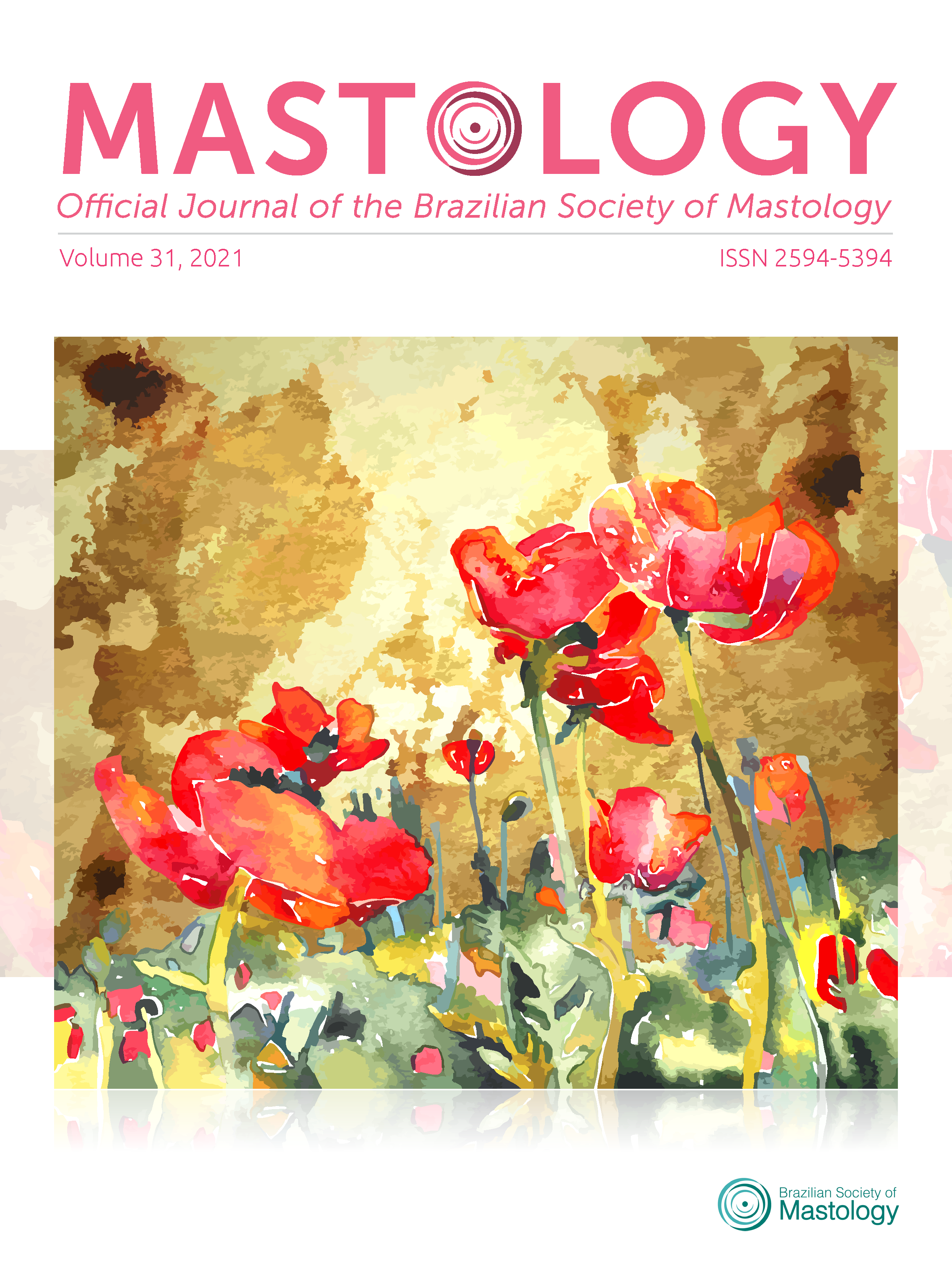Patient navigation
fighting for the rights of breast cancer patients in Brazil
Keywords:
breast neoplasms, patient navigation, barriers to access of health services, patient rightsAbstract
Introduction: The content of this article deals with the experience of the navigation program for patients in a breast cancer diagnosis center of the State Health Department of Rio de Janeiro. The objective was to show how the patient navigation program can allow the proper application of the 60-day Law, being a topic of interest for the planning and evaluation of actions to control this cancer in Brazil. Methodology: The patient navigator accompanied women from the Unified Health System (Sistema Único de Saúde — SUS) with a diagnosis of breast cancer to start treatment at a specialized center within 60 days. Information on the clinical characteristics of the patients, clinical dates and barriers encountered were collected. Univariate logistic regression was used to assess factors associated with starting treatment within 60 days. Results: From January to July 2020, 301 breast biopsies were performed, 126 (42%) of breast cancer. The mean age was 54 years (26–88). 75% of the lesions were diagnosed in advanced stages (IIB to IV). The mean time to start treatment was 39 days (11–108). The main barriers found were: fear (93%), difficulty in communicating with the medical team (81%), uncoordinated health care (37%). Being treated outside the city of Rio de Janeiro (RJ) was the main factor associated with treatment within 60 days (79.5% vs. 20.5%, p < 0.001). Conclusion: The integration of the patient browser into work processes contributed to compliance with the 60-day Law in 86% of cases. In the context of a complex and fragmented healthcare system for a population in a situation of socioeconomic vulnerability, the patient navigation program proves to be a tool to increase the rate of law enforcement in Brazil.
Downloads
References
Gioia SM, Silva SF. Implementation strategies for the guidelines for the early detection of breast cancer in Brazil. Mastology. 2019;29(4):224-35. https://doi.org/10.29289/25945394201920190007
Instituto Nacional de Câncer José Alencar Gomes da Silva. Estimativa 2020: incidência de câncer no Brasil [Internet]. Rio de Janeiro: INCA, 2019 [cited on Sept 1, 2020]. Available at: https://www.inca.gov.br/sites/ufu.sti.inca.local/files/media/document/estimativa-2020-incidencia-de-cancer-no-brasil.pdf
Câncer no Brasil: A jornada do paciente no sistema de saúde e seus impactos sociais e financeiros. Interfarma [Internet], 2018 [cited on Sept 1, 2020]. Available at: https://edisciplinas.usp.br/pluginfile.php/6231212/mod_resource/content/3/cancer-no-brasil-n-a-jornada-do-paciente-no-sistema-de-saude-e-seus-impactos-sociais-e-financeiros-interfarma.pdf
Rosa DD, Bines J, Werutsky G, Barrios CH, Cronemberger E, Queiroz GS, et al. The impact of sociodemographic factors and health insurance coverage in the diagnosis and clinicopathological characteristics of breast cancer in Brazil: AMAZONA III study (GBECAM 0115). Breast Cancer Res Treat. 2020;183(3):749-57. https://doi.org/10.1007/s10549-020-05831-y
Franzoi MA, Rosa D, Zafaroni F, Werutsky G, Simon S, Bines J, et al. Advanced Stage at Diagnosis and Worse Clinicopathologic Features in Young Women with Breast Cancer in Brazil: A Subanalysis of the AMAZONA III Study (GBECAM 0115). J Glob Oncol. 2019;5:1-10. https://doi.org/10.1200/jgo.19.00263
Freeman H, Rodriguez R. History and principles of patient navigation. Cancer. 2011;17(150):3539-42. https://dx.doi.org/10.1002%2Fcncr.262627. Dalton M, Holzman E, Erwin E, Michelen E, Rositch AF, Kumar S, et al. Cancer patient navigation in low-and middle-income countries: A scoping review. Plos One. 2019;14(10):e0223537. https://dx.doi.org/10.1371%2Fjournal.pone.0223537
Calhoun E, Esparza A. Patient Navigation: overcoming barriers care. New York: Springer; 2018.
Brasil. Presidência da República. Lei N. 12.732, de 22 de novembro de 2012 [Internet]. Brasil; 2012 [cited on Sept 1, 2020]. Available at: http://www.planalto.gov.br/ccivil_03/_ato2011-2014/2012/lei/l12732.htm.
Marsillac ML, Gioia S, Silva F, Torres c, Brigadão L, San Miguel S, et al. Improvement of the “Law of 60 Days” by Implementing Patient Navigation within the Breast Cancer Program: Pilot Project in Rio de Janeiro. Acta Sci Cancer Biol. 2020;4(3):42-7. https://dx.doi.org/10.31080/ASCB.2020.04.0203
Gioia S, Galdino R, Brigagão L, Valadares A, Secol F, San Miguel S, et al. Prediction of Attendance to the “Law of 60 Days” in Breast Cancer Patients using Machine Learning Classifiers. Acta Sci Cancer Biol. 2020;4(3):1628. https://dx.doi.org/10.31080/ASCB.2020.04.0209
Rio de Janeiro. Secretaria de Estado de Saúde do Rio de Janeiro. Plano Estadual de Atenção Oncológica [Internet]. Rio de Janeiro: Secretaria de Estado de Saúde do Rio de Janeiro; 2017 [cited on Sept 1, 2020]. Available at: http://www.cib.rj.gov.br/arquivos-para-baixar/boletins-cib/2228-planoatencaooncologicafinal-centrosregionaisdiagnostico-052017/file.html.
Brady MJ, Cella DF, Mo F, Bonomi AE, Tulsky DS, Lloyd SR, et al. Reliability and validity of the Functional Assessment of Cancer Therapy-Breast quality-of-life instrument. J Clin Oncol. 1997;15(3):974-86. https://doi.org/10.1200/jco.1997.15.3.974
Ahmed F, Burt J, Roland M. Measuring patient experience: concepts and methods. Patient. 2014;7(3):235-41. https://doi.org/10.1007/s40271-014-0060-5
Oliveira D, Cavalcante L, Carvalho R. Sentimentos de Pacientes em Cuidados Paliativos sobre modificações corporais ocasionadas pelo câncer. Psicol Ciênc Prof. 2019;39:e176879. https://doi.org/10.1590/1982-3703003176879
Silva K, Barreto F, Carvalho F, Carvalho PRS. Estratégias de enfrentamento após o diagnóstico de câncer de mama. Rev Bras Prom Saúde. 2020;33:10022. https://doi.org/10.5020/18061230.2020.10022
Tejeda S, Darnell JS, Cho YI, Stolley MR, Markossian TW, Calhoun EA. Patient barriers to follow-up care for breast and cervical cancer abnormalities. J Womens Health. 2013;22(6):507-17. https://dx.doi.org/10.1089%2Fjwh.2012.3590
Tamagawa R, Garland S, Vaska M, Carlson LE. Who benefits from psychosocial interventions in oncology: a systematic review of psychological moderators of treatment outcomes. J Behav Med. 2012;35(6):658-73. https://doi.org/10.1007/s10865-012-9398-0
Gioia S, Brigagão L, Torres C, Lima A, Medeiros M. The implementation of patient navigation to improve mammography coverage and access to breast cancer care in Rio de Janeiro. Mastology. 2019;29(4):186-92. https://doi.org/10.29289/25945394201920190006
Brasil. Ministério da Saúde. Relatório de Intervalo de Tempo. Integrador RHC [Internet]. Brasil: Ministério da Saúde; 2020 [cited on Sept 1, 2020]. Available at: https://irhc.inca.gov.br/RHCNet/visualizaTabNetExterno.action
Buzaid A, Achatz M, Amorim G, Barrios CH, Carvalho FM, Cavalcante FP, et al. Challenges in the journey of breast cancer patients in Brazil. Braz J Oncol. 2020;16:e-20200021. https://doi.org/10.5935/2526-8732.20200021
Downloads
Published
How to Cite
Issue
Section
License
Copyright (c) 2021 Sandra Gioia, Lucia Brigagão, Maicon Rocha, Paul Goss

This work is licensed under a Creative Commons Attribution 4.0 International License.







